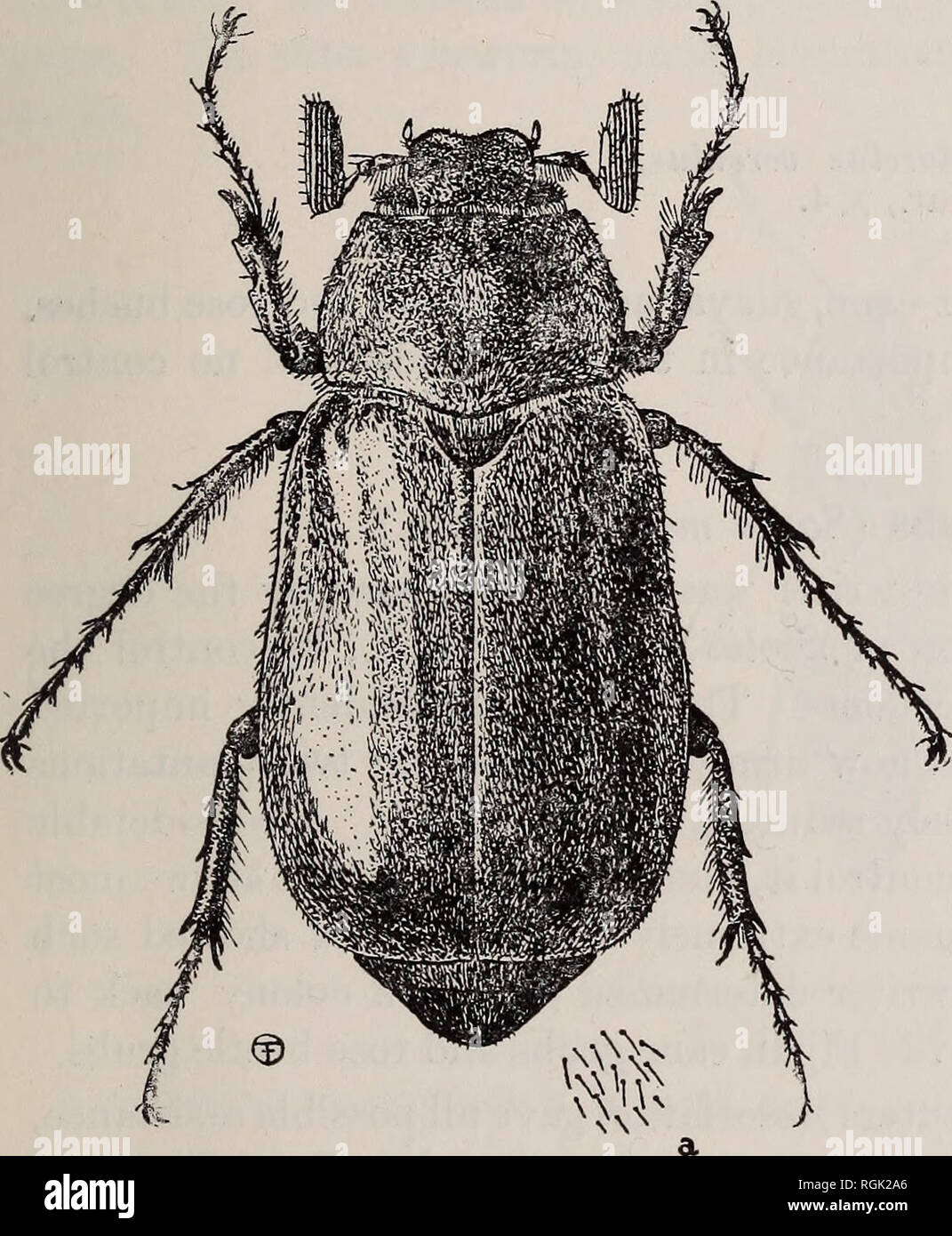. Bulletin of entomological research. Entomology. INSECTS IN SUGAR-CANE PLANTATIONS IN FIJI. 29 eggs of the two species, but the well grown grubs are not difficult to separate, as that of R. subnitida is more hairy and has longer legs than the grub of R. vestita. The egg-laying records of females kept in captivity and the dissection of ovaries show that in reproductive powers the species are similar. It is therefore difficult to explain why this grub should be so much less numerous than the other. The beetles are just as hardy, and in the laboratory the grubs are not nearly so easily injured a

Image details
Contributor:
Book Worm / Alamy Stock PhotoImage ID:
RGK2A6File size:
7.1 MB (410.1 KB Compressed download)Releases:
Model - no | Property - noDo I need a release?Dimensions:
1435 x 1741 px | 24.3 x 29.5 cm | 9.6 x 11.6 inches | 150dpiMore information:
This image is a public domain image, which means either that copyright has expired in the image or the copyright holder has waived their copyright. Alamy charges you a fee for access to the high resolution copy of the image.
This image could have imperfections as it’s either historical or reportage.
. Bulletin of entomological research. Entomology. INSECTS IN SUGAR-CANE PLANTATIONS IN FIJI. 29 eggs of the two species, but the well grown grubs are not difficult to separate, as that of R. subnitida is more hairy and has longer legs than the grub of R. vestita. The egg-laying records of females kept in captivity and the dissection of ovaries show that in reproductive powers the species are similar. It is therefore difficult to explain why this grub should be so much less numerous than the other. The beetles are just as hardy, and in the laboratory the grubs are not nearly so easily injured as those of the sandy soil species. The explanation of the relative scarcity of this grub will probably be found in the presence of some enemy which attacks R. subnitida only and has so far escaped observation, or in the existence of some other adverse factor in the soil types frequented by this grub. This is a point worthy of further investigation. The control measures recommended for R. vestita will also be of assistance in checking the destructive activities of this species.. Please note that these images are extracted from scanned page images that may have been digitally enhanced for readability - coloration and appearance of these illustrations may not perfectly resemble the original work.. Great Britain. Colonial Office. Entomological Research Committee; Imperial Institute of Entomology; Commonwealth Institute of Entomology. Farnham Royal : Commonwealth Agricultural Bureaux